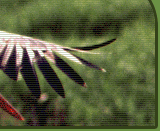The socio-economic context of the project All the 16 project territories represent typical floodplain meadow areas, which are more or less regularly flooded. Because of this, these lands have never been used for intensive agricultural production. Most areas during 20th century have been partly improved (drained) to expand areas for hay production. However, starting with 80-ties a need for hay as cattle food during winter decreased and eventually became insignificant with collapse of collective farms operating under socialism system. This was because the number of cattle decreased more than 2 fold. As a result, a majority of less perspective lands for agriculture (floodplain meadows) were abandoned and overgrowing process begun. Floodplain areas themselves (and regularly flooded meadows in particular) have never been densely inhabited. Most farms were situated on the upper side of river valley slopes, which are not affected by floods. Today 11 selected sites have no human settlements, 3 have few (below 5), and only 2 sites have numerous, as these sites are complex territories. Consequently no significant infrastructure elements exist in these areas except some extensively used gravel roads and drainage systems, but many of them are no longer functional or are overgrown with bushes. However, some project sites (Dviete floodplains, Kalnciems meadows, Svetes lejtece) are crossed by roads of regional importance.  | | Sluice-gate at Vārpas village in floodplains of Svēte River | We have estimated that there are about 800 landowners in the area, but it does not necessarily mean that they are living in the project territory or in surroundings. As experience shows, there are cases when landowners are living in other parts of Latvia or even abroad and not willing/able to participate in project activities on site. Slightly over 100 people permanently live in the project territory, but nobody lives directly in the area, which will be targeted by the project actions. We expect to involve them, as well as other landowners of the sites, living outside the area and having interest to manage their lands (either themselves or with help of neighbors). We also expect to provide opportunities to participate in seminars for farmers that have interest in nature friendly farming but whose lands are not situated in project territory. Of course, the priority will be given to farmers from the site, but if additional seats will be available, neighboring farmers (especially those from the same river catchment basin) will be invited as well. | 
| | About 800 landowners are involved in all 16 project sites | Using the overall project area, population density is approximately 0.7 inhabitants/km2. Some of the selected territories border with several relatively large towns and villages (Jelgava 70 962 inhabitants, Kalnciems 2152, Alsunga 904, Dviete 392). Total number of landowners of the 16 territories is more than 800, however, there are territories with only one or few owners. Many landowners live near to project areas or in closest region centers. Large areas of abandoned meadows are owned by citizens, which use the area for hunting wild animals. Preliminary interviews during project preparation phase showed that these people are interested in meadow restoration (as it is compatible with game management) and will allow carrying out activities planned in this project. Private properties in many areas are quite small and appear as thin (one or several hundred metres wide) stretches of land along the river/lake. More than 90 % of the grassland areas in the project territories are private property. Income from the agriculture in project sites is insignificant and mostly is an addition to regular income sought from other sources. There are mostly small farms (homesteads with a herd of 1 5 cattle, and a garden) in the project territories. The number of cattle varies from year to year, because the keeping is often ceased and started again. This is a reason of irregularity and small scope of management: hay making and grazing is applied in less than 1/6 of all project meadows. About 7080% of the agricultural lands are abandoned now. However, areas of intensive agriculture are situated in relatively close surroundings of many project areas. Many local farms own equipment necessary for meadow restoration, which can be hired for this project.  | | Extensive hay-making is common in small farms | The threat of the meadow overgrowing is closely related to the decrease in cattle breeding. Total number of cattle has not been estimated at the moment. Contacts with local farmers were started during project preparation phase in several territories, including Dviete floodplains, sites in the North Vidzeme Biosphere Reserve and in the Gulbene Region. For example in the Daugavpils Region, seminars were organized to inform local people about the nature values of the region and relevant conservation problems. In general, the farmers were worried about the lack of money to manage their lands, including meadows, which they have to abandon. They showed the interest to manage grasslands, if the financial support could be provided. Current unemployment rate in Latvia is 8.5%, but generally it can be higher in the regions, including municipalities involved in this project. Local authorities saw this project idea as a good opportunity for temporary solution in minimizing unemployment through involving local people in floodplain management. Contacts with local landowners and municipalities were also established during implementation of EMERALD/Natura 2000 project (2001-2003), especially during the meetings on potential borders, protection status and management of new protected territories. Wrong attitude to nature conservation likely forbidding any economic activities have been revealed from these meetings. Findings from the meetings with municipalities and landowners were one of the main reasons for preparation of this project. 
|








